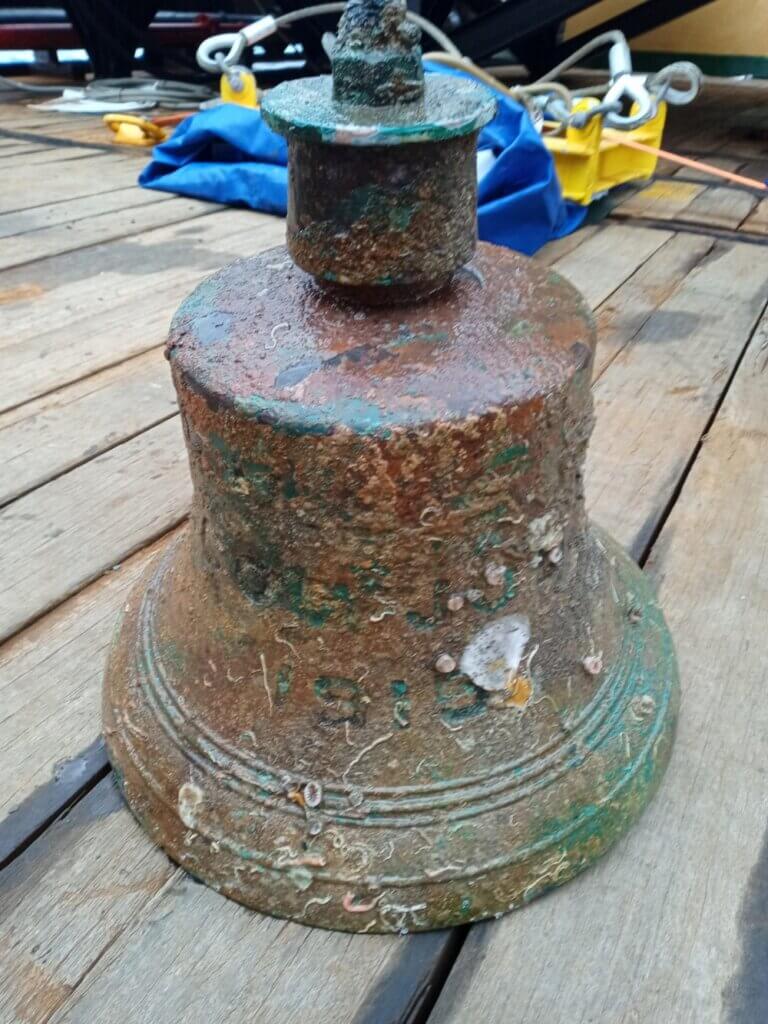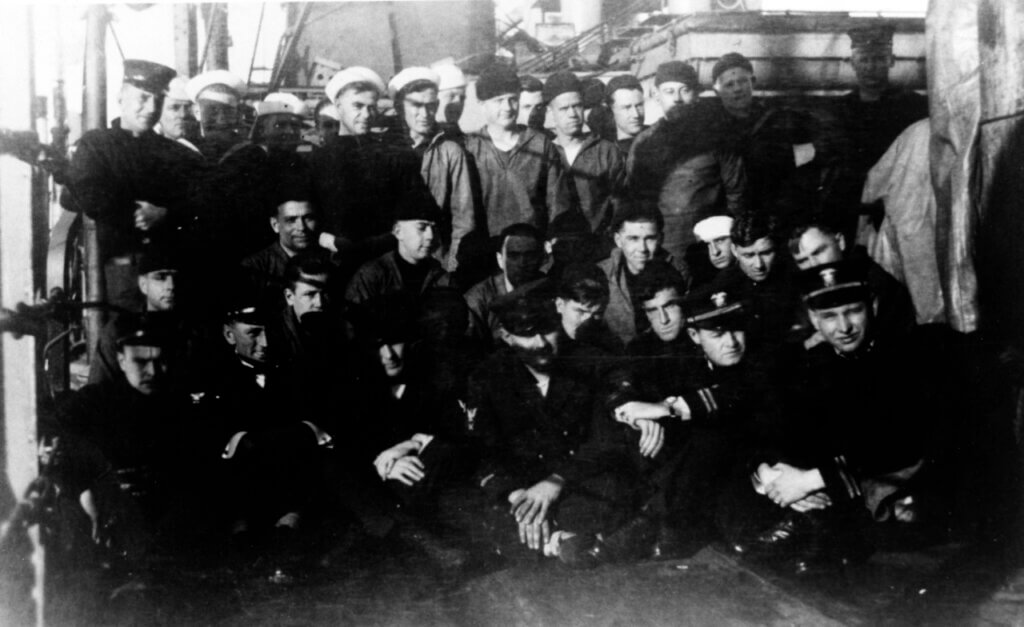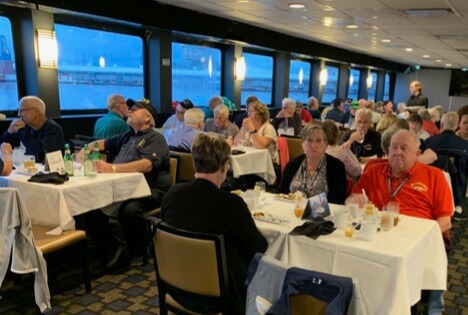Dear Members, Friends and Tin Can Fans,


Here is an amazing story that you won’t read about everyday. It is a story of US Naval history and heritage, and to honor the legacy of some of the bravest and most heroic sailors who ever served in the U.S. Navy.
The Story of on USS Jacob Jones
The USS Jacob Jones was a World War I American destroyer that rescued hundreds of survivors from torpedoed ships. In 1917, it was sunk by a German submarine in the English Channel, killing 64 sailors. The ship’s bell, a symbol of the crew’s bravery and sacrifice, was recently recovered from the wreck by British divers. It will be displayed at the National Museum of the U.S. Navy in Washington, D.C.
This is the story of the USS Jacob Jones, the first U.S. Navy destroyer ever sunk by enemy fire, and the recent recovery of its bell from the wreck site.
The USS Jacob Jones and Its History
The USS Jacob Jones was a Tucker-class destroyer commissioned in 1916. It was named after Commodore Jacob Jones, a naval hero of the War of 1812. The ship was designed for high speed and maneuverability, and armed with four 4-inch guns, eight 21-inch torpedo tubes, and two depth charge racks. The ship was assigned to the Atlantic Fleet, and patrolled the U.S. coast and the Caribbean Sea.
After the U.S. entered World War I in April 1917, the USS Jacob Jones was deployed to the U.K. to join the anti-submarine warfare campaign. The ship escorted supply convoys across the Atlantic Ocean, and rescued hundreds of survivors from damaged British ships that had been hit by enemy torpedoes. The ship earned a reputation for its courage and compassion, and was praised by both the U.S. and the British naval authorities.
On December 6, 1917, the USS Jacob Jones was returning from escorting a convoy to France, when it was attacked by a German U-boat, U-53, in the English Channel. The U-boat fired a single torpedo that struck the ship’s stern, causing a massive explosion and a fire.

The ship’s commander, David W. Bagley, ⁹ordered the ship to be abandoned and the life rafts to be launched, as the stern began to sink. The ship went down in eight minutes, with two officers and 62 crew members on board. The U-boat commander, Hans Rose, radioed the coordinates of the survivors to the U.S. base at Queenstown, Ireland, and offered to take some of the wounded on board.
However, the survivors refused his offer, and waited for rescue. The U.S. Navy later awarded Rose a letter of commendation for his humanitarian gesture.

The Discovery and Recovery of the Bell
The wreck of the USS Jacob Jones remained undiscovered for over a century, until August 2022, when a group of expert divers found it about 400 feet below the surface of the English Channel, some 60 miles south of Cornwall. The divers were amazed by the condition of the wreck, which was largely intact and well-preserved. They also noticed the ship’s bell, which was still attached to the ship’s mast. The bell was made of brass and weighed 80 pounds. It had the ship’s name and the year of commissioning engraved on it. The bell was a historical and symbolic artifact, as it was used to signal the ship’s movements, to mark the time, and to call the crew to action.
The discovery of the wreck attracted the attention of the Naval History and Heritage Command (NHHC), the U.S. Navy’s official organization responsible for preserving and protecting the Navy’s historical and archaeological resources. The NHHC partnered with the U.K. Ministry of Defense to study the wreck site, and to recover the bell. The NHHC’s policy is to leave the shipwrecks undisturbed, as they are considered war graves and sacred sites. However, in this case, the NHHC was concerned about the unauthorized and illegal salvaging of the bell, which could damage the wreck and disrespect the sailors. The NHHC decided to retrieve the bell, and to use it as a memorial to the sailors who made the ultimate sacrifice in the defense of both the U.S. and the U.K.
In January 2024, a specialized salvage unit from the U.K. Ministry of Defense’s Salvage and Marine Operations (SALMO) conducted a survey of the wreck site, and successfully recovered the bell. The operation was challenging and risky, as the wreck site was deep, dark, and cold, and the bell was heavy and fragile. The salvage team used a remotely operated vehicle (ROV) to cut the bell from the mast, and to lift it to the surface. The salvage team also placed a wreath and an American flag on the wreck, to honor the lost sailors. The operation was a remarkable example of the cooperation and friendship between the U.S. and the U.K. in the naval domain.
The Bell as a Memorial
After the recovery, the bell was given temporarily to Wessex Archaeology, a private U.K. firm under contract with the NHHC, for documentation and conservation. The bell will be turned over to the U.S. during a ceremonial transfer later this year, and will be sent to the NHHC’s Underwater Archaeology Branch for further conservation treatment. The bell will eventually be displayed at the National Museum of the U.S. Navy in Washington, D.C., where it will serve as a memorial to the sailors who served and died on the USS Jacob Jones, and as a reminder of the history and heritage of the U.S. Navy.
We, the members and friends of the Americans for a Stronger Navy, are grateful and proud of the USS Jacob Jones and its sailors, who exemplified the values and ideals of the U.S. Navy, and who contributed to the security and freedom of both the U.S. and the U.K. We are committed to honoring their legacy and supporting the U.S. Navy and its sailors in their efforts to maintain and enhance their naval power, deterrence, and readiness in the 21st century. We invite you to learn more about the USS Jacob Jones and its history, and to visit the National Museum of the U.S. Navy when the bell is displayed. We also encourage you to continue your advocacy and support for a stronger U.S. Navy, and to join us in our efforts to promote naval power, deterrence, and readiness in the 21st century. Thank you for your attention and interest, and may God bless the U.S. Navy and the U.S.A.


